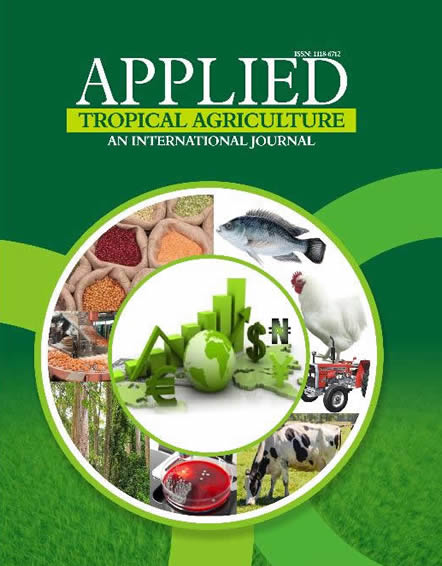The influence of different treatment techniques on the absorption of preservatives by Obeche wood against decay fungi was
examined. The treatment techniques consisted of cold and hot dipping methods, while the preservatives included solignum, neem
leaf extract and spent engine oil. The experimental design was 3 x 2 x 3 factorial experiment in Completely Randomized Design.
Five sets of the wood samples were immersed in hot and cold preservatives for 6 and 24 hrs. respectively. The percentage
preservative absorptions were recorded. The treated wood samples were inoculated with Sclerotium rolfsii and Pleurotus
sajorcaju fungi for 12 weeks after which the weight losses were recorded. Data obtained were subjected to Analysis of Variance
(ANOVA). The results revealed that the hot treatment technique recorded the highest (50.98%) mean absorption. With 97.29%
and 36.18% mean preservative absorption for both hot and cold treatment techniques respectively, Solignum preservative had
the highest significant effects on Obeche wood. Hot treatment technique recorded the lowest (18.20%) and significant mean
weight loss, while solignum and the control respectively recorded the lowest (9.67%) and highest (28.40%) mean weight loss of
the Obeche wood. The hot treatment technique increased the penetration and absorption of preservative chemicals into Obeche
wood, while solignum preservative had a better absorption and retention as well as the highest inhibition of the degree of attack
of the fungi species on Obeche.
PAPER TITLE :EFFECTS OF HOT AND COLD TREATMENT TECHNIQUES ON PRESERVATIVE ABSORPTION OF TRIPLOCHITON SCLEROXYLON
APPLIED TROPICAL AGRICULTURE | VOLUME 20 NUMBER 2 2015
Paper Details
- Author(s) : Falemara, B.C.1, Ampitan, T.2 and Oyeleye, I.O.3
- Abstract:


